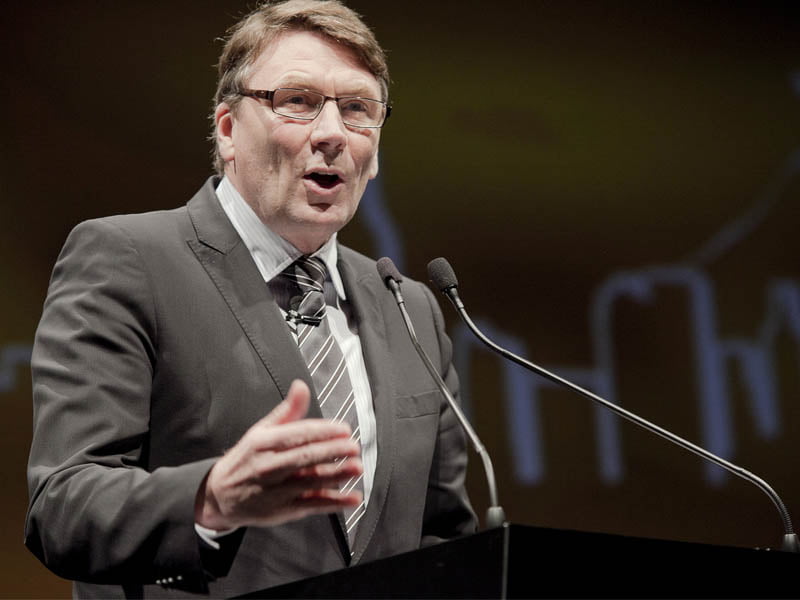Bill Ferris and David Thodey laid down the law on Australia’s needs to get off its arse and begin building some serious twenty-first century capital if it is to retain country’s high living standards, but is the government or the nation listening?
Ever since the Coalition’s one seat majority shock at the 2016 election and the electoral demise of innovation wunderkind Wyatt Roy, the Turnbull government has turned the volume way down on the ‘ideas revolution’ schtick it was happy to wear as a brand in the heady days of the 2015 National Innovation and Science Agenda.
Innovation rhetoric came to be seen as electoral poison, especially for voters who came to see the term as shorthand for losing your job. The Innovation portfolio has become something of an unloved toy, having been passed through the hands of five different Coalition ministers, so far.

Once upon a time, when he was the leather jacketed communications shadow, Mr Turnbull would regularly trot out a stump speech that wondered how Australia would fund its first world public infrastructure and services without upskilling its workforce and shifting business entrepreneurship into this tech and science heavy age.
However, CSIRO chair and former Telstra boss Mr Thodey and Innovation and Science Australia (ISA) chair Mr Ferris are still trying to fight the good fight.
“In my view, innovation will be critical to the economic and social outcomes that produce the Australia of 2030; accordingly government innovation policy should occupy a prominent role in our politics and our broader public discourse,” Mr Ferris told the recent Committee for Economic Development of Australia (CEDA) Innovation and Disruption 2018 event series with the topic of “creating value through science”.
ISA earlier this year handed the government its Australia 2030: Prosperity through Innovation.
At the CEDA do, Mr Ferris hammered home the report’s messages.
“To get there by 2030 our strategic plan calls out five imperatives to be tackled if Australia is to close the present considerable gap in innovation performance between it and key competitor nations.”
“So what would success look like in 2030? We want Australia to be a top tier innovation nation by 2030, known and respected for the excellence of its research, science and commercialisation, with plentiful and meaningful jobs in a fair, inclusive and healthy economy and society.”
Funnily enough, that sounds just like Mr Turnbull’s old stump speech.
Mr Ferris went hard on changing the education landscape to prepare people for the workplace of the future and expressed alarm that overall results in science, maths and literacy had declined in the last ten years despite an increase in funding.
“This must be reversed,” he said.
“Given that digital literacy will be just as important in future work as basic literacy and numeracy, we support increased emphasis on STEM subjects with an expanding role for the STEM Partnerships Forum, bringing industry and education leaders together to lift student understanding and awareness of the relevance of STEM skills to a wide range of careers.
“The changing nature of work in the future means that reskilling and life-long training and learning will be essential to establish a competitive workforce and to maintain a fair and inclusive society out to 2030 and beyond,” said Mr Ferris, again eerily echoing the thrust of Mr Turnbull’s long ago speech.
Bill Shorten scored a small bouquet along the way for making noises about boosting the vocational education sector.
“We’ve seen recent announcements from the Opposition around a review of higher education including VET and we take that as a promising sign that this vital issue is being seriously considered by all sides of politics… as it should be,” said Mr Ferris.
He went on to argue for more stimulation for high-growth firms, reform of the R&D tax incentive with a $4 million cap on the refundable component of the incentive, goosing up innovation in SMEs and mandating SMEs scored a third of government contracts, by dollar value, by 2022, making our governments global leaders in digital service delivery, having governments and citizenry embrace the idea of ten year National Missions into areas like genomics and precision medicine, and making big improvements to our lowly capacity to translate and commercialise research.
Mr Thodey in his CEDA speech, honed in on Australia’s research commercialisation problem.
“Our issue has been not the ability of our scientists to discover new scientific facts – our challenge has been our ability to take our great science and apply it to real problems or challenges – so that we create value for society,” Mr Thodey said.
“You will be familiar with the often referenced statistic published by the OECD that while Australia is ranked in the top 10 per cent in science and research – we score poorly on the commercialisation of that research. Why?”
“If we accept the premise that science drives value, and that we are reasonably good at science and research – then this inability to drive value from our science is a major issue at worst – or alternatively, a major opportunity if we can get this right.”
Planning a way to much better researcher and industry collaboration and therefore much improved research translation and commercialisation was crucial, Mr Thodey said.
“Commercialisation is not easy,” he said. “You need to be disciplined and tenacious – it is not a short term proposition – it takes time and investment and risk.
“For a nation of our size, it will take all of us working together to realise our national potential. But with a potential this size, we can’t afford not to,” Mr Thodey said.
The big question is, was anybody listening?
Do you know more? Contact James Riley via Email.

